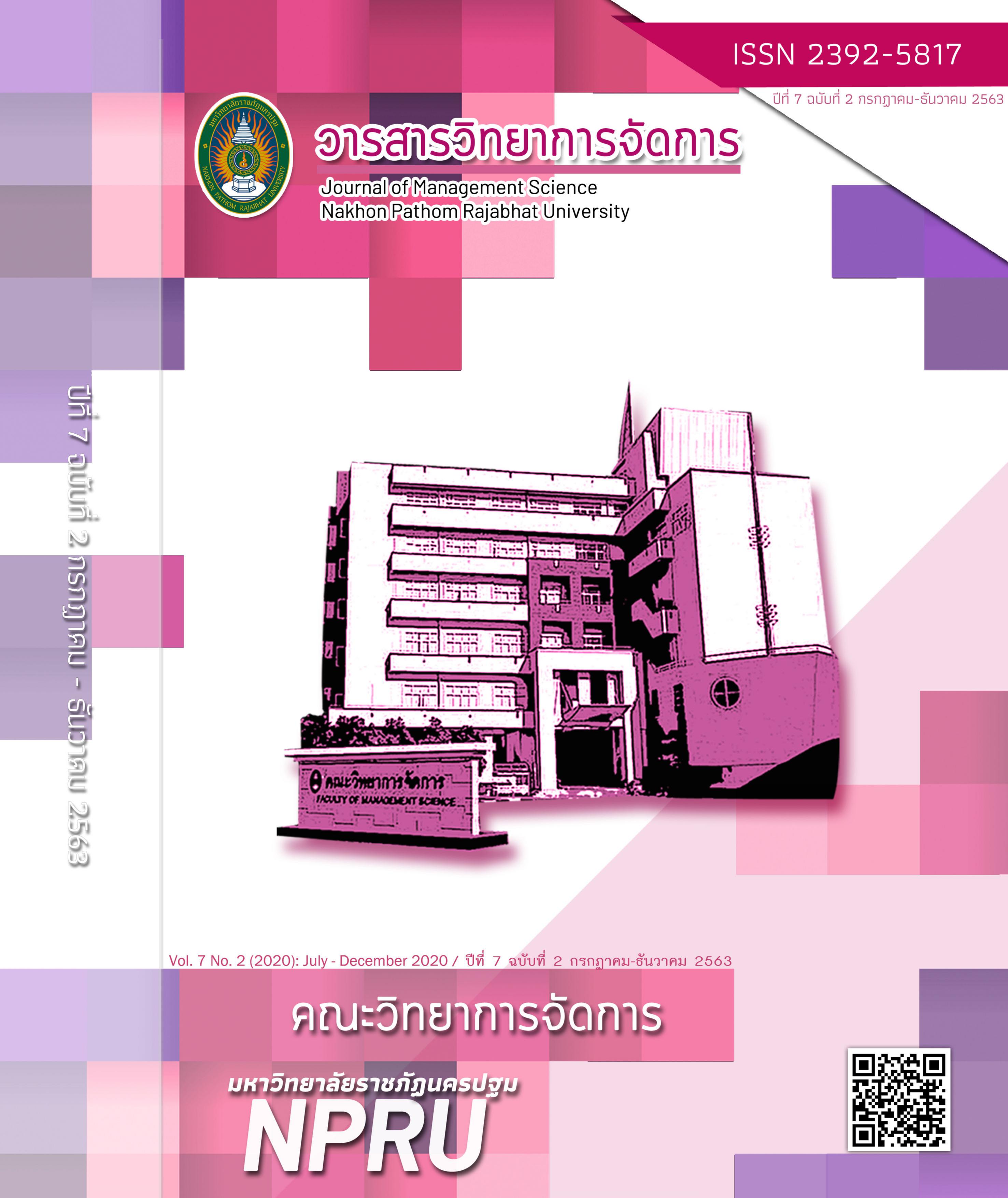Media Literacy Advantages and Applications A Case Study of Nakhonpathom Rajabhat University
Main Article Content
Abstract
The purposes of this research were to study 1) exploring advantages of media literacy education during semester-long course 2) analyzing how students read, interpret media texts and implement media literacy knowledge in daily life. The study evaluates perception and knowledge application of 86 bachelor program students from media literacy course at Nakhon Pathom Rajabhat University, by purposive sampling, the questionnaire was designed to collect survey data for quantitative research and data were analyzed by frequency mean and standard deviation .
The findings of this research were as follows:
1. Overall, the first three aspects evaluated to be very satisfied through the advantages of media literacy are 1) Students recognize the importance of the moral, values and ethics toward themselves, community and society. 2) Students are aware of the importance of professional ethics that media professionals must have. 3) Students can choose to receive news or content from good quality media and benefit students
2. The first three aspects evaluated to be very satisfied through the application of media literacy are 1) Students will produce news content and media by setting appropriate target, objectives, and communication strategies 2) Students will search for news content from various sources such as internet and social media. Also, students can select information which is reliable, accurate, and systematically manageable and 3) Students can produce media by choosing symbols, various audiovisual techniques to create meaning, communicating emotion and artistic beauty.
Article history: Received 4 April 2020
Revised 9 September 2020
Accepted 11 September 2020
SIMILARITY INDEX = 0.00 %
Article Details
The views and opinions of the article appearing in this journal are those of the author. It is not considered a view and responsibility of the editorial staff.
References
โครงการวัยมันส์เท่าทันสื่อ. (2552). วัยมันส์ เท่าทันสื่อ. คู่มือจัดกิจกรรมเพื่อการเรียนรู้เท่าทันสื่อสำหรับนักเรียนมัธยมศึกษาตอนปลาย. (พิมพ์ครั้งที่ 2) กรุงเทพมหานคร : ปิ่นโตพับลิชชิ่ง.
จินตนา ตันสุวรรณนนท์. (2550). ผลการฝึกอบรมเพื่อพัฒนาการรู้เท่าทันสื่อของนักศึกษามหาวิทยาลัยราชภัฏสวนดุสิต. ปริญญานิพนธ์ สาขาการวิจัยพฤติกรรมศาสตร์ประยุกต์ มหาวิทยาลัยศรีนครินทรวิโรฒ
โตมร อภิวันทนากร. (2552). คิดอ่าน ปฏิบัติการเท่าทันสื่อ คู่มือสำหรับจัดกระบวนการและกิจกรรมเพื่อพัฒนาเยาวชนรู้ทันสื่อ. กรุงเทพมหานคร : แผนงานสื่อสร้างสุขภาวะเยาวชน สำนักงานกองทุนสนับสนุนการสร้างเสริมสุขภาพ.
อนงค์นาฎ รัศนมีเวียงชัย. (2555). โครงการวิจัยเรื่องการรู้เท่าทันสื่อของนักเรียนระดับชั้นมัธยมศึกษาในโรงเรียนชุมชนประชาธิปไตยวิทยาคาร. คณะวารสารศาสตร์และสื่อสามารมวลชน มหาวิทยาลัยธรรมศาสตร์. [ออนไลน์] ค้นเมื่อวันที่ 28 พฤษภาคม 2558 จาก dog.qa.tu.ac.th/documente/7.jc/jc/ปีการศึกษา%202555/องค์ประกอบที่%205/สมศ.8/สมศ.8-9%20รายงานโครงการวิจัย%20การรู้เท่าทันสื่อของนักเรียนชั้นมัธยมศึกษา%20.pdf.
อุณาโลม จันทร์รุ่งมณีกุล. (2549). ‘เปิดม่านการรู้เท่าทันสื่อ’ ในอมรรัตน์ ทิพย์เลิศ เปิดประตูสู่การรู้เท่าทันสื่อแนวคิดทฤษฎีและประสบการณ์การรู้เท่าทันสื่อเพื่อสุขภาพ. นนทบุรี : โครงการสื่อสร้างสรรค์สุขภาพ (สสส.)
Considine, D., Horton, J. & Moorman, G. (2009). Teaching and Reading the Millennial Generation Through Media Literacy. Journal of Adolescent & Adult Literacy, 52 (6), 471-481.
Potter, W. J. (2004). Theory of media literacy: A Cognitive approach, California USA: Sage Publications.
Potter, W. J. (2014). Media Literacy. (7th ed.). London : Sage Publications.
Silverblatt, A. & Eliceiri, E. M. E. (1997). Dictionary of Media Literacy. Greenwood.
Thoman, E. & Jolls, T. (2003). Literacy For the 21st Century: An Overview & Orientation Guide To Media Literacy Education, Retrieved August 6, 2019, from http://www.medialit.org/sites/default/files/01_MLKorientation.pdf.


